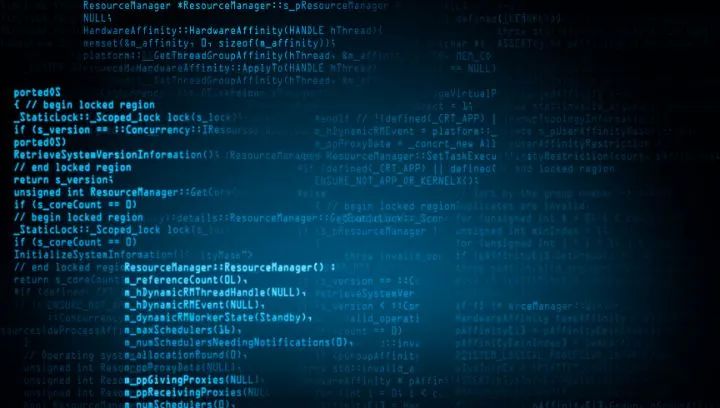Introduction
Software development is a complex and intricate process that often involves multiple developers, countless lines of code, and numerous iterations over time. However, as a software project evolves and grows, it is susceptible to a phenomenon called "software entropy." In this article, we will delve into the concept of software entropy, its causes, and explore an illustrative example to understand its implications. Furthermore, we will discuss strategies to manage and mitigate the impact of entropy on software projects.
Understanding Software Entropy
Software entropy, also known as code entropy or program entropy, refers to the natural tendency of software systems to become increasingly disordered, complex, and harder to maintain as they evolve over time. It is a metaphorical representation of the second law of thermodynamics, where chaos and disorder tend to increase over time. In the context of software, entropy occurs due to various factors, such as:
- Poorly designed architecture: As developers add new features and functionalities, the original architecture might become cluttered and convoluted, leading to tangled code dependencies.
- Frequent changes: Constant modifications and quick fixes to meet deadlines can result in the accumulation of sub-optimal code.
- Lack of documentation: Inadequate or outdated documentation makes it difficult for new developers to understand the codebase, leading to hasty, unstructured modifications.
- Technical debt: Rushing to deliver a feature or fix might introduce technical debt, which accumulates over time, causing increased maintenance efforts.
- Team turnover: When experienced developers leave and new ones join the team, knowledge gaps can lead to inconsistencies and poor decision-making.
Illustrative Example: The Growing Complexity of a Web Application
Let's consider a hypothetical example of a web application called "SuperTasker," a task management platform. Initially, the application was built with a clear and organized architecture. As more features were added to meet user demands, the codebase expanded, and certain shortcuts were taken to expedite development.
Initially, the SuperTasker application had a clean and modular codebase, making it easy for developers to add new features and maintain the existing ones. However, with time, several developers joined the team, each contributing in their unique style without proper code reviews or adherence to the original architecture.
As a result, the once-cohesive codebase began to suffer from software entropy. The architecture became unclear, with functions and classes becoming tightly coupled and interdependent. The lack of documentation further compounded the problem, as new developers found it increasingly challenging to understand the existing codebase.
Additionally, technical debt accumulated, leading to performance bottlenecks and reduced application responsiveness. The application's load time increased, and it became more susceptible to bugs and vulnerabilities due to rushed patches and modifications.
Mitigating Software Entropy
Software entropy is an inherent challenge in software development, but it can be managed and minimized with proactive strategies:
- Regular code reviews: Enforcing a systematic code review process helps identify potential issues and ensures adherence to coding standards and architecture.
- Refactoring: Periodically review the codebase for refactoring opportunities to eliminate redundancies, improve performance, and maintain code quality.
- Documentation: Encourage comprehensive and up-to-date documentation to assist new developers in understanding the codebase.
- Automated testing: Implement automated testing to catch bugs early and ensure that changes do not inadvertently affect existing functionalities.
- Knowledge sharing: Foster a culture of knowledge sharing and mentorship within the development team to bridge knowledge gaps and promote best practices.
Conclusion
Software entropy is an ever-present challenge in software development, but understanding its causes and implications can help developers take proactive measures to mitigate its effects. By maintaining clean code, promoting documentation, and fostering collaboration among team members, software projects can resist the creeping chaos of entropy, ensuring longevity, scalability, and maintainability over time.
Frequently Asked Questions
What is software entropy?
Software entropy, also known as code entropy or program entropy, refers to the natural tendency of software systems to become increasingly disordered, complex, and harder to maintain as they evolve over time. It is caused by factors such as poor architecture, frequent changes, lack of documentation, technical debt, and team turnover.
How does software entropy affect software projects?
Software entropy can lead to decreased maintainability, increased development time, and reduced code quality. As the codebase becomes more tangled and disorganized, it becomes harder for developers to understand and modify the software, resulting in increased bugs and difficulties in adding new features.
What are the signs of software entropy in a project?
Signs of software entropy include a lack of clear documentation, increasing numbers of bugs and performance issues, long development cycles, excessive technical debt, and difficulties in onboarding new developers to the project.
How can software entropy be mitigated?
Mitigating software entropy requires proactive efforts from the development team. Strategies include conducting regular code reviews, refactoring to eliminate redundancies, documenting code and architecture, implementing automated testing, and fostering knowledge sharing among team members.
Why is refactoring important in managing software entropy?
Refactoring is essential because it helps improve the codebase's structure and maintainability. By removing redundant code, breaking down large functions into smaller ones, and adhering to coding standards, refactoring reduces complexity and makes it easier for developers to maintain and enhance the software.
How can documentation help combat software entropy?
Documentation plays a crucial role in combating software entropy by providing a clear understanding of the codebase's architecture and design decisions. Comprehensive and up-to-date documentation helps new developers onboard quickly, reduces the chance of introducing bugs during modifications, and ensures a shared understanding of the codebase among the team.
What is technical debt, and how does it contribute to software entropy?
Technical debt refers to the shortcuts taken during software development to meet deadlines or deliver features quickly. These shortcuts, if left unaddressed, accumulate over time and result in poor code quality, which increases the software's complexity and makes it harder to maintain, leading to software entropy.
How can automated testing help prevent software entropy?
Automated testing helps catch bugs and issues early in the development process. By running automated tests continuously, developers can ensure that changes and new features do not inadvertently break existing functionalities, preventing the accumulation of hidden issues that contribute to software entropy.
How can team turnover contribute to software entropy?
When experienced developers leave a team and new ones join, knowledge gaps may arise. Without a clear understanding of the existing codebase, new developers might make decisions that lead to inconsistencies and poor code quality, contributing to software entropy.
Is it possible to completely eliminate software entropy?
While it is challenging to entirely eliminate software entropy, proactive measures can significantly reduce its impact. By following best practices, maintaining clean code, and fostering a collaborative and learning-oriented team culture, developers can effectively manage and mitigate the effects of software entropy on their projects.




